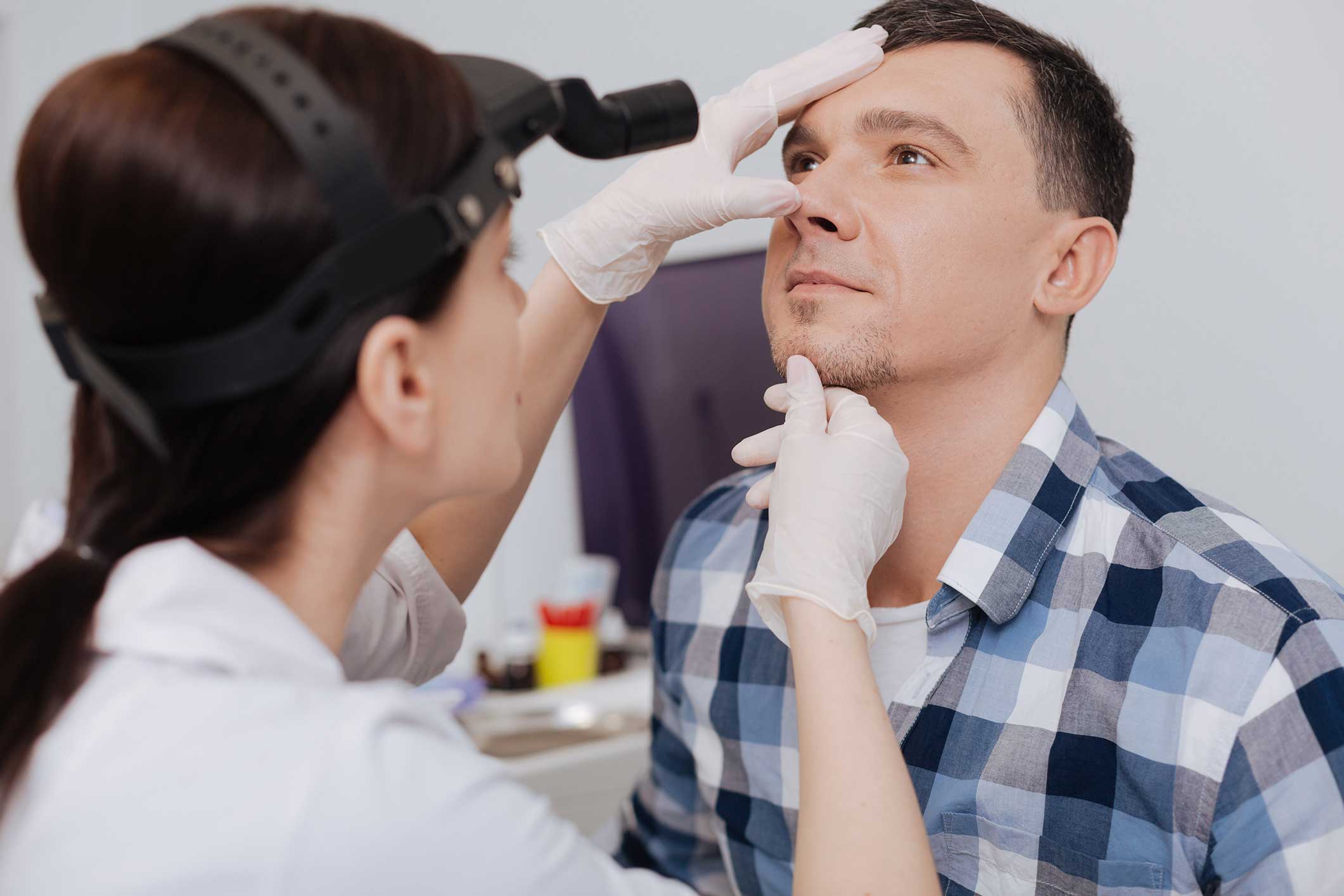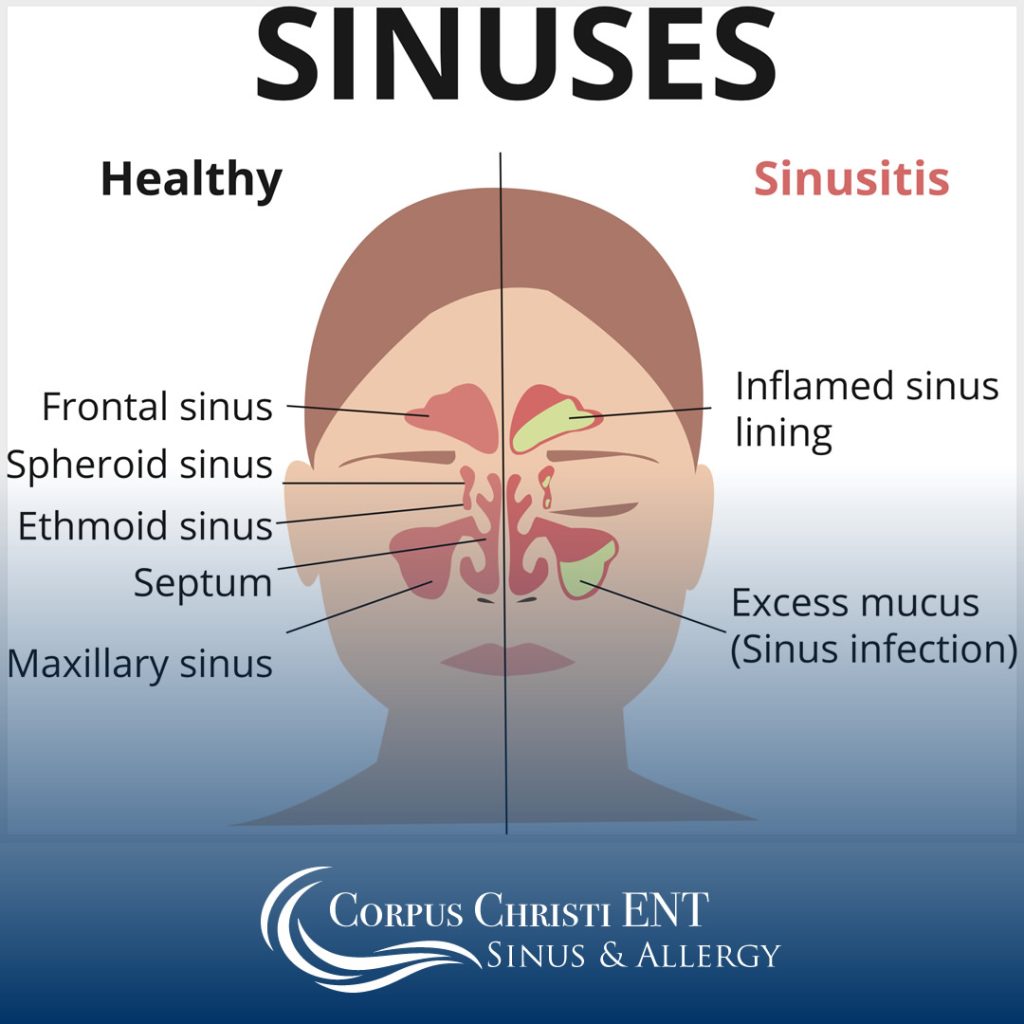
Sinus Infections
When Should I Worry About Sinus Pain?
The worst part about getting a sinus infection could be that you can feel it coming from a mile away. The pressure around your nose starts to build. Your head gets a little achy and it gets hard to think. Your nose gets a little runny. And you know–as sure as the sun rises in the morning–that tomorrow you’re going to be miserable.
Sinus infections can have a myriad of causes, though they’re usually related to fluid build up in your sinus cavities. That’s why a short cold can maliciously turn into a lengthy sinus infection. Because your ears, nose, and throat are all connected, a sinus infection can have major implications for your overall health–both in the short term and the long term.
What is Sinusitis?

What Are the Signs of a Sinus Infection?
In addition to pain and pressure around and behind the eyes, sinus infections may also have the following symptoms:
- Difficulty breathing through the nose
- Fever
- Yellow, brown, or discolored mucus
- Sore throat from a post-nasal drip
- Jaw pain
- Bad breath
Sinus Headaches
Symptoms of sinusitis or migraine headaches can be similar to sinus headaches, which can be confusing about what is causing your sinus pain or pressure. Not every headache is a result of sinus or nose problems. Many patients visit an ENT doctor thinking they have a sinus headache, then find out it is a migraine or tension headache.
Sinus headaches tend to worsen as you bend forward or lie down. The key to reducing symptoms is to reduce the sinus swelling and inflammation.
During your consultation Dr. Weiss will evaluate your severity of symptoms, go over your medical history, and do a physical exam. If you have repeated or chronic sinus pain or pressure Dr. Weiss may do a nasal endoscopy (to see inside your nose and sinuses) or do an in-office CT scan to determine if your symptoms are due to your sinuses.
Will My Sinus Infection Clear on Its Own?
If you have sinus pressure for more than a week, or have additional symptoms of infection such as fever or discolored mucus, you should make an appointment to see us in Corpus Christi. While many sinus infections clear up on their own, left untreated, they can also spread to the ear or throat. With a quick appointment we’ll be able to determine whether you need antibiotics.
Chronic Sinus Infections and Sinusitis

Corpus Christi ENT Sinus & Allergy
Corpus Christi, TX
5641 Esplanade Dr.
Corpus Christi, TX 78414
Call: 361-320-6130
Fax: 361-287-0101
Monday through Friday, 8am – 5pm
Affiliated with Advanced Hearing Aid & Diagnostics, LLC





Is your nose constantly stuffed up? Call Us